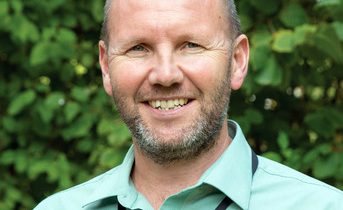Andy Elvin – TACT CEO, shares his views on the Government’s new adoption strategy.
The education secretary, Nicky Morgan, unveiling the new adoption strategy over the Easter weekend, said: “We cannot stand by while children spend months in care waiting for their new family, when loving parents are available.” But children in foster care are not “waiting” for a loving family: they are in one.
Foster care isn’t a substandard second-best to adoption, it is the permanence option for 75% of children in the care system. It offers stability, consistency, care and love and delivers fantastic outcomes for children. Sadly, I suspect some bright young thing cynically judges that contrasting loving adopters with the evil care system plays well with the party base. Such reductive thinking disheartens the tens of thousands of foster carers who look after more than 50,000 of the UK’s most vulnerable children and do a fantastic job.
The Department for Education’s paper itself is nuanced and includes some excellent proposals, so it is sad that the new vision came with a side helping from Morgan of the old divisive rhetoric.
To the DFE’s credit it has recognised there are a variety of placement types that can meet the long term needs of vulnerable children and that each case must be judged on its merits.
The paper states: “Where birth parents cannot meet a child’s basic needs it is one of the state’s most important responsibilities to step in and ensure that children can have a childhood which keeps them safe and enables them to flourish. The right permanence option for a child will always depend on their individual needs and circumstances. If they cannot live with their birth parents, there are a number of placement types – foster care, living with a special guardian, kinship care arrangements and residential care – which can all provide the right placement.”
The DfE rightly notes in the paper that “permanence, stability, quality of care and avoidance of delay are the factors which most affect children’s welfare and their future chances in life”.
It is vital that we find the right placement for every child as early as possible, whatever it is. It may be back with the birth parents. If so, it is crucial they are given the same level of support that would be available if the child had been placed with relatives, adopters or foster carers. It is a continuing failure of the system that the level of support varies so widely between children in different types of placements.
Children do not see legal orders. They only see, and feel, the quality of the care, stability, consistency and love they get. As professionals we must not allow ourselves to be steered into silo thinking with children receiving different levels of service because they happen to be placed on a special guardianship order, not an adoption order or a section 31 care order. The education department has accepted the recommendations of the working group that TACT was part of by extending the adoption support fund to special guardianship placements. This is very welcome but the funding now looks thinly spread.
The announcement also bought news that Andrew Christie, commissioner for children’s social care in Birmingham, will be the next chair of the Adoption Leadership Board. This is an excellent appointment and will hopefully see the board lead on permanence and look at making improvements for all children in the care system, not only those who go on to be adopted.
Christie says: “Having spent four decades working with some of the most vulnerable children in our society, I know how important it is to provide them with the support and stability they need to help them realise their full potential and guide them into adulthood.”
This inclusive approach towards all vulnerable children, rather than separating them into silos, gives me hope that we could see the start of a transformation for all children in care or whose permanent home has been decided by the family courts, whatever their situation.



